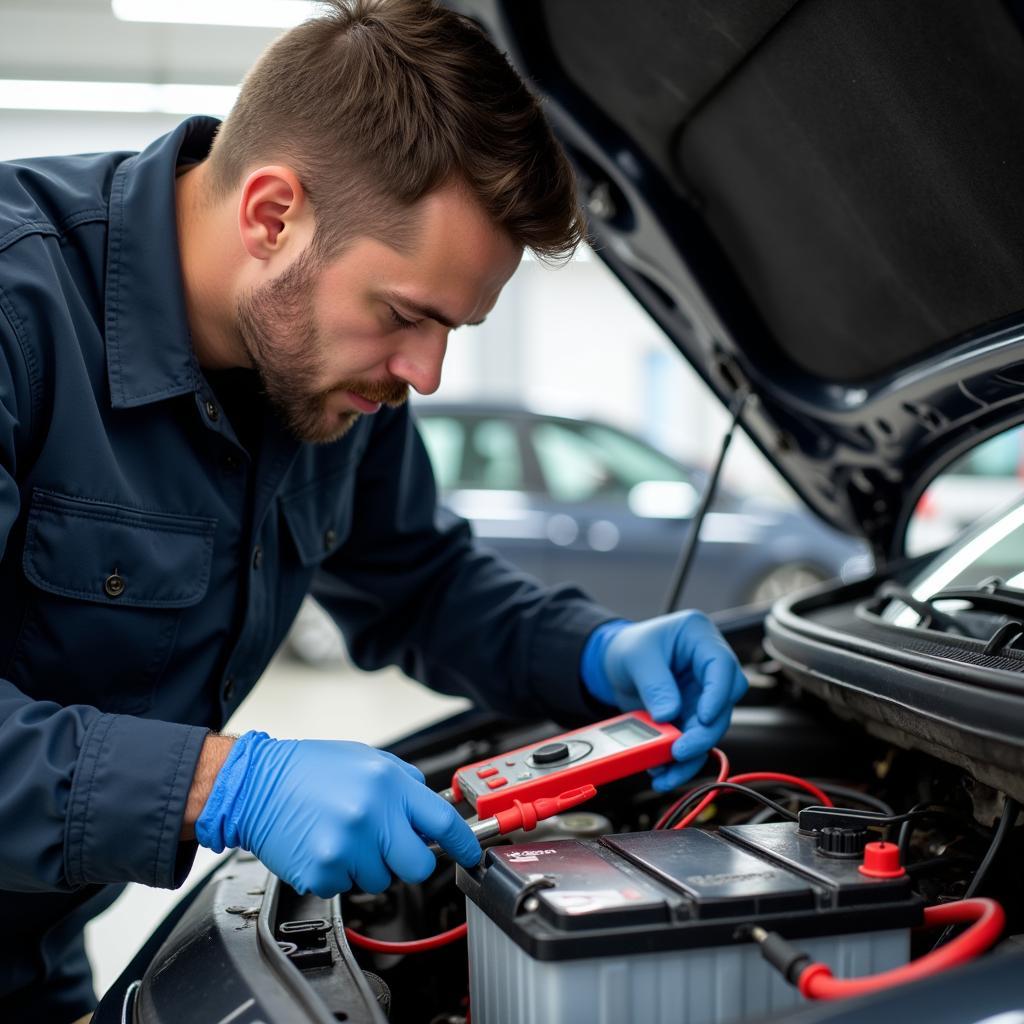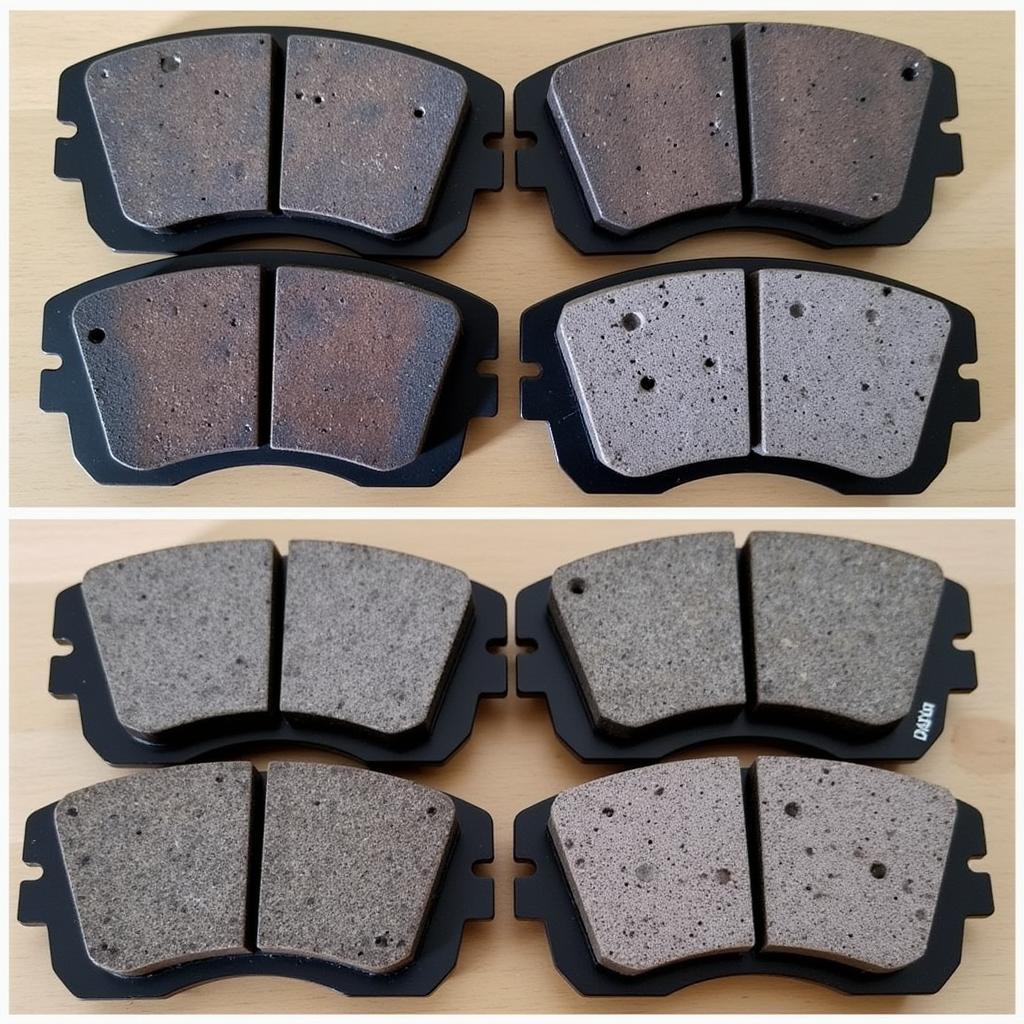Understanding Common Car Problems
Before diving into specific issues, let’s first grasp the various categories of car problems:
- Engine Problems: These are often the most serious and can include issues with starting, running, and performance.
- Electrical Problems: Issues with car lights, electrical systems, and even your car’s entertainment system fall into this category.
- Transmission Problems: If you’re experiencing issues with shifting gears, rough transmission, or strange noises, there might be a transmission issue.
- Suspension and Steering Problems: This covers issues with your car’s ability to handle, steer, and brake smoothly.
- Brake Problems: Any unusual noises, vibrations, or lack of responsiveness when braking should be investigated immediately.
Troubleshooting and Repairing Common Car Issues
Now, let’s dive into some common car problems and how to address them.
1. Battery Problems
Common Symptoms:
- Difficulty starting the car
- Dim headlights
- Clicking sound when trying to start
Troubleshooting and Solutions:
- Check the battery terminals: Corrosion or loose connections can prevent proper current flow. Clean the terminals with a wire brush and tighten them.
- Test the battery voltage: A fully charged car battery should have a voltage of around 12.6 volts. If it’s significantly lower, the battery might need replacement.
- Jumpstart the car: If the battery is completely dead, jumpstarting it can temporarily get it running.
Expert Tip: “A car battery’s lifespan is generally 3-5 years. Regularly check its condition and replace it if necessary to prevent unexpected breakdowns.” – John Smith, Certified Automotive Technician
 Mechanic checking car battery
Mechanic checking car battery
2. Alternator Problems
Common Symptoms:
- Battery light on the dashboard
- Dim headlights
- Electrical components malfunctioning
Troubleshooting and Solutions:
- Inspect the alternator belt: A worn or loose belt can prevent the alternator from generating power.
- Test the alternator output: An automotive technician can use a multimeter to measure the alternator’s voltage output. If it’s below the manufacturer’s specifications, the alternator may be faulty.
- Replace the alternator: If the alternator is damaged, it needs to be replaced.
3. Engine Overheating
Common Symptoms:
- Temperature gauge reading high
- Steam coming from the hood
- Engine knocking or rattling sounds
Troubleshooting and Solutions:
- Check the coolant level: Low coolant levels can lead to overheating. Add coolant to the reservoir if necessary.
- Inspect the radiator: A clogged radiator can prevent proper cooling. Flush the radiator or have it professionally cleaned.
- Check the thermostat: A faulty thermostat can prevent the engine from cooling down properly.
 Steam coming from a car engine
Steam coming from a car engine
4. Tire Problems
Common Symptoms:
- Uneven wear
- Vibrations or shaking
- Low tire pressure
Troubleshooting and Solutions:
- Check tire pressure: Make sure tire pressure is within the manufacturer’s recommended range.
- Rotate tires: Rotating tires regularly helps ensure even wear.
- Inspect tire tread: Tread depth should be at least 2/32 of an inch.
5. Brake Problems
Common Symptoms:
- Squealing or grinding noises
- Spongy brake pedal
- Vehicle pulling to one side when braking
Troubleshooting and Solutions:
- Check brake pads and rotors: Worn brake pads or rotors can cause noise and reduced braking performance.
- Inspect brake fluid level: Low brake fluid can indicate a leak.
- Check for leaks: Inspect brake lines and calipers for signs of fluid leaks.
 Close-up of worn brake pads next to new brake pads
Close-up of worn brake pads next to new brake pads
When to Seek Professional Help
While many car problems can be addressed at home, some situations warrant professional help.
- Complex Electrical Issues: If you’re facing complex electrical problems, a qualified mechanic should diagnose and repair them.
- Engine Problems: Major engine problems, like a blown head gasket, require specialized expertise.
- Transmission Issues: Transmission problems can be difficult to diagnose and repair.
- Safety Concerns: If you have concerns about the safety of your vehicle, don’t hesitate to seek professional assistance.
Conclusion
Being proactive about car maintenance and understanding common problems can help you avoid costly repairs and ensure your vehicle runs smoothly. If you encounter issues you’re not comfortable handling, reach out to a trusted mechanic. With proper care and attention, your car will serve you reliably for many miles to come.
For any further questions or assistance, please contact us at:
Phone: +1 (641) 206-8880
Office: 500 N St Mary’s St, San Antonio, TX 78205, United States
FAQ
1. How often should I change my oil?
The recommended oil change interval varies depending on your car’s make and model, but generally, it’s around 3,000-5,000 miles.
2. What are the warning signs of a bad alternator?
A battery light on the dashboard, dim headlights, and electrical components malfunctioning are common signs of a failing alternator.
3. What should I do if my car overheats?
If your car overheats, pull over to a safe location, turn off the engine, and let it cool down before checking the coolant level.
4. How can I tell if I need new tires?
Inspect your tires regularly for uneven wear, tread depth, and signs of damage.
5. What’s the best way to prevent brake problems?
Regular brake inspections, maintaining proper brake fluid levels, and replacing worn brake pads and rotors are essential for preventing brake problems.






Leave a Reply